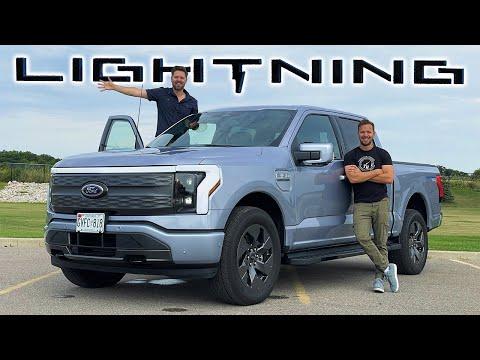I remember the day I first got behind the wheel of the 2022 Ford F-150 Lightning vividly. It was a crisp autumn morning, and the anticipation was electric—quite literally. As a lifelong fan of trucks and an early adopter of new technologies, I was eager to experience Ford’s bold step into the electric vehicle (EV) market with the Lightning. The promise of combining the rugged utility of the F-150 with the efficiency and modernity of an electric powertrain had me hooked from the start.
The journey began with a test drive appointment at my local Ford dealership. I had seen plenty of promotional material and read countless reviews, but nothing could quite prepare me for the experience of driving the Lightning myself. Arriving at the dealership, I was greeted by a gleaming F-150 Lightning parked proudly in the showroom. Its design was strikingly familiar yet refreshingly modern. The classic F-150 silhouette was there, but with sleek LED headlights and a futuristic grille that hinted at the advanced technology under the hood—or rather, in the trunk.
Climbing into the driver’s seat, I immediately felt the spaciousness of the cabin. The interior of the Lightning was a blend of high-tech innovation and traditional comfort. The large digital display in the center console was a focal point, offering an array of information and controls at my fingertips. As I adjusted my seat and mirrors, I noticed the absence of the traditional engine roar. Instead, there was a serene silence, punctuated only by the soft hum of the electric motor.
When I finally pressed the accelerator, I was taken aback by the Lightning’s instant torque. The acceleration was smooth and powerful, a stark contrast to the more gradual build-up of power I was used to in internal combustion engines. It was exhilarating to feel the truck surge forward with such effortless speed. The electric motor provided a near-instantaneous response, making city driving and highway merging an absolute breeze.
Navigating through the city streets, I marveled at how quiet and smooth the ride was. The absence of engine noise made for a more peaceful driving experience, allowing me to focus on the road and the impressive tech features surrounding me. The Lightning’s advanced driver assistance systems were immediately apparent, with features like adaptive cruise control, lane-keeping assist, and automatic emergency braking working seamlessly to enhance my confidence behind the wheel.
One of the standout features of the Lightning was its frunk, or front trunk. Unlike traditional trucks that have a large, heavy engine in the front, the Lightning’s electric powertrain allowed for a spacious and practical storage area. I found it incredibly convenient for stowing gear, tools, or groceries, and it made me rethink the possibilities of vehicle storage in general. Additionally, the frunk came with power outlets, turning it into a versatile space for charging tools or even running small appliances.
As I took the truck out on the highway, the true extent of its capabilities began to shine. The F-150 Lightning is equipped with an impressive towing capacity and a hefty payload rating, aligning with Ford’s legacy of building tough, reliable trucks. It was clear that this wasn’t just an electric vehicle designed for city driving; it was built to handle the demands of real-world work and play. I was curious to see how it performed under load, so I made a quick detour to a nearby campsite where I could test the towing capabilities. With a small trailer hitched up, the Lightning handled it effortlessly, demonstrating that it could indeed be a game changer for those who need a powerful workhorse but are looking to reduce their carbon footprint.
Another feature that stood out during my drive was the advanced infotainment system. Ford had clearly invested a lot of effort into ensuring that the Lightning wasn’t just a high-tech vehicle in terms of performance but also in terms of user experience. The SYNC 4A system was intuitive and responsive, offering a plethora of apps and connectivity options that made long drives more enjoyable. The navigation system was particularly impressive, with real-time updates and detailed maps that helped me easily navigate to my destinations.
The charging infrastructure was also a major topic of discussion for anyone considering an electric vehicle, and Ford had addressed this with the Lightning by providing a range of options. The truck came with a standard home charger, and I was pleased to learn about the fast-charging capability that would allow for quicker top-ups during long trips. The range of the Lightning was more than adequate for my needs, making it a viable option even for longer journeys without the anxiety of finding a charging station.
As my test drive came to an end, I couldn’t help but reflect on how Ford had managed to blend tradition with innovation. The 2022 F-150 Lightning felt like a step into the future while staying true to the qualities that have made the F-150 a household name for decades. It offered the power, capability, and reliability expected from an F-150, but with the added benefits of electric efficiency and advanced technology.
In the end, driving the F-150 Lightning was more than just a test drive; it was an experience that showcased the potential of electric trucks. Ford had indeed created something that could be considered a game changer, not just for the truck segment but for the automotive industry as a whole. The Lightning was a testament to how traditional automakers could adapt and innovate, paving the way for a more sustainable future without compromising on the core values that make trucks so beloved.
